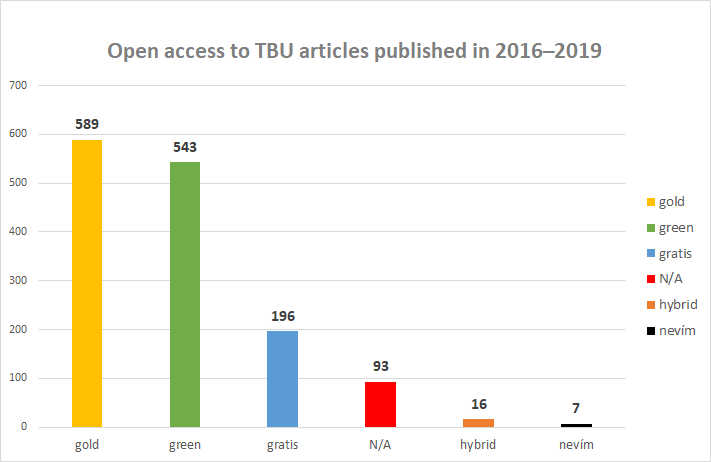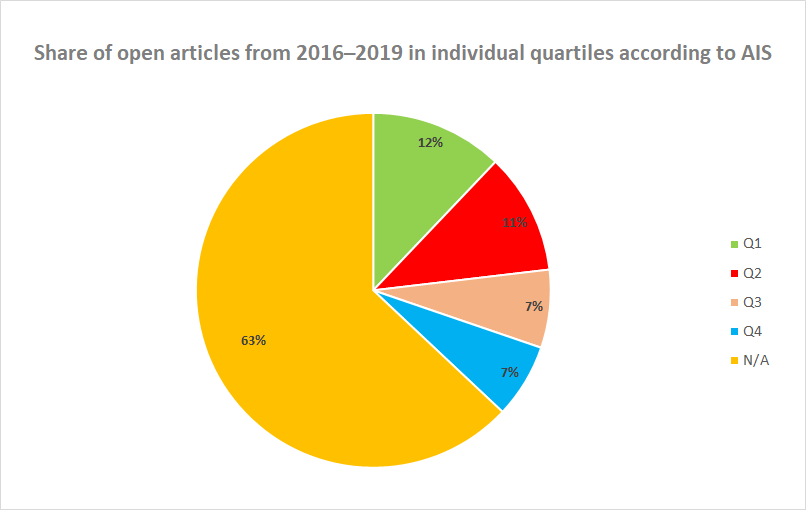Open access at TBU
The analysis of published articles for the years 2016–2019 showed that authors from the ranks of TBU have extensive experience with open publishing. Most published articles are or may be made available in some way. Most articles are freely available in fully open journals (gold Open Access), a few articles are immediately available in hybrid journals – these are journals in which the author pays for open access only to a specific article, the rest of the journal needs to be subscribed.
The library archives all these articles and makes them available in a digital repository. This ensures better traceability and permanent access to the article.

TBU has great potential in the field of self-archiving (green open access). Most publishers allow the article to be archived in a digital repository. Most often, postprint archiving is enabled, i.e. version of the article after the peer review, which does not yet have a typographic modification of the journal.
For the purposes of self-archiving (publication of the article by the author), it is appropriate to select the latest version of the postprint (ie the content of the postprint is identical to the published article). Some publishers allow you to easily download a postprint. A correspondent author should have the postprint as he communicates with the editors and sends individual versions of the article to the journal. It would be appropriate in the author’s team to agree on the storage of all versions and communication with the editors.
If the authors provide a postprint to the library, we can publish it in the repository as soon as possible, and readers from institutions that do not have access to the databases in which the published article is available will also be able to access the article. The library carefully checks the possibilities of self-archiving at individual publishers; authors do not have to worry about publishing texts that are not allowed.
A large part of the articles is published in the so-called gratis OA mode — i.e. the article is available to readers free of charge on the publisher’s website, but is otherwise protected by standard copyright, which may be an obstacle in further use of the article (eg it can no longer be shared)
Authors often fear that open journals are of lower quality than traditional journals. It is not true. Among the top titles are also fully open ones, or it is possible to ensure access to articles from traditional journal in a green way.

Most open articles in recent years have been published at TBU in journals that are not included in the Web of Science database. However, within the journals included in this database, journals from the first two quartiles (according to the Article Influence Score) predominate. Hopefully, in the future, there will be a majority of open articles from the first two quartiles.